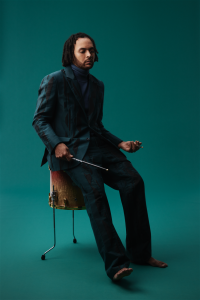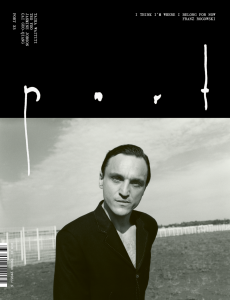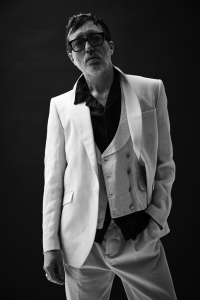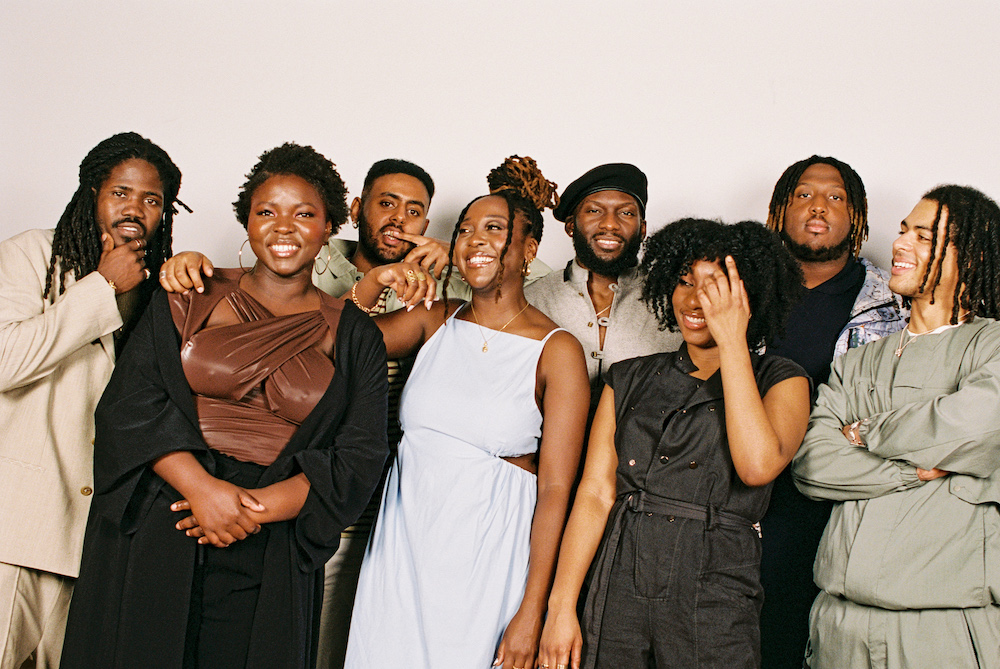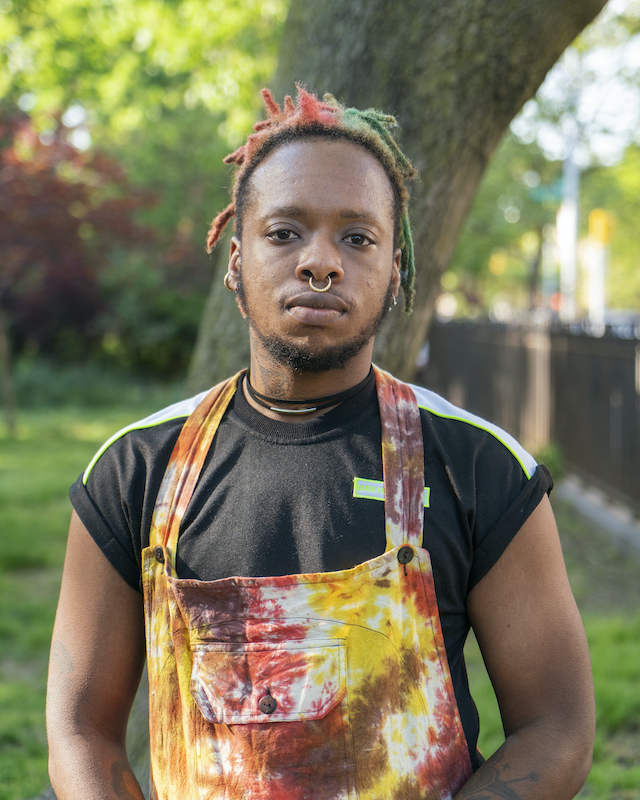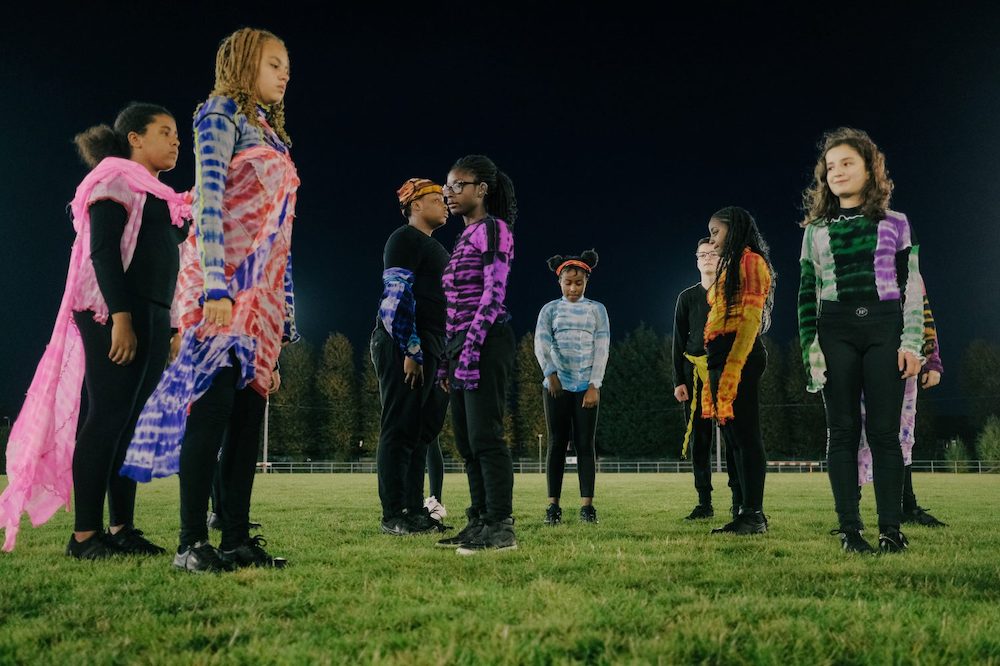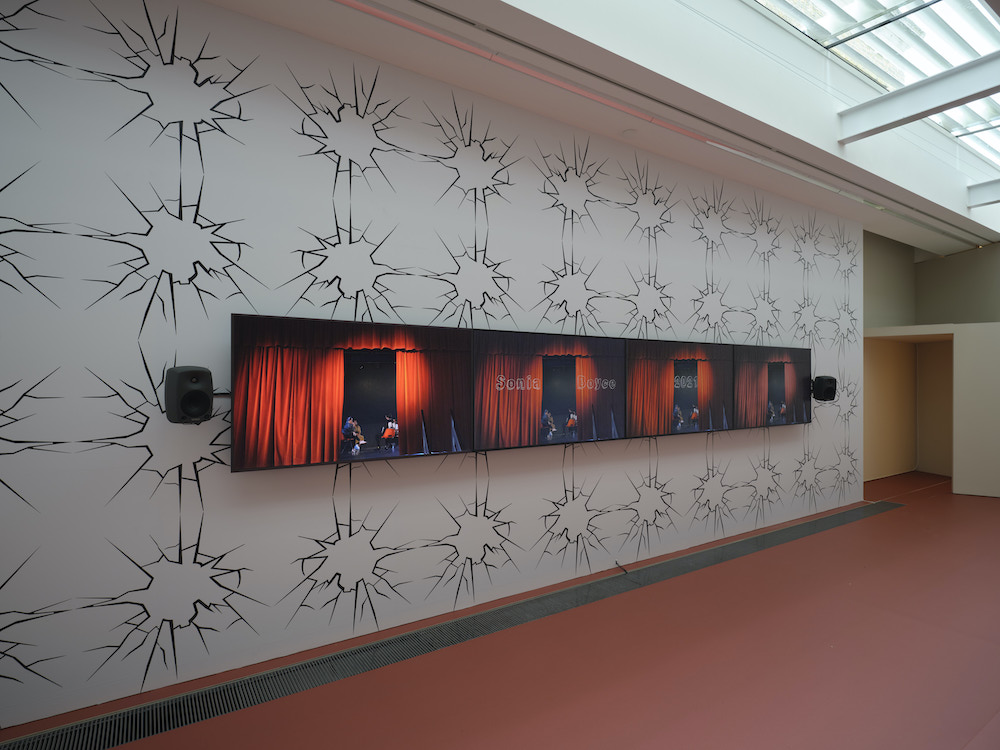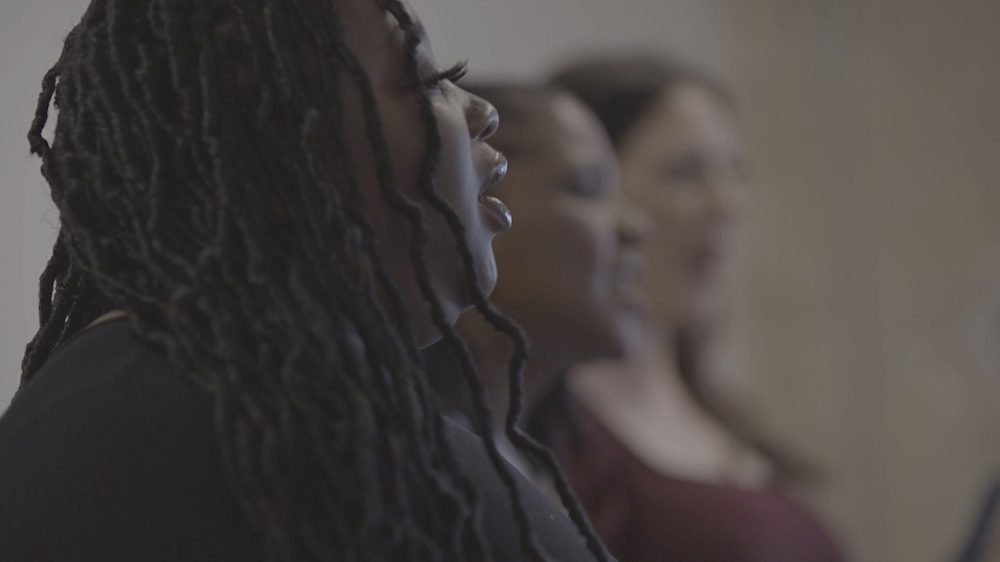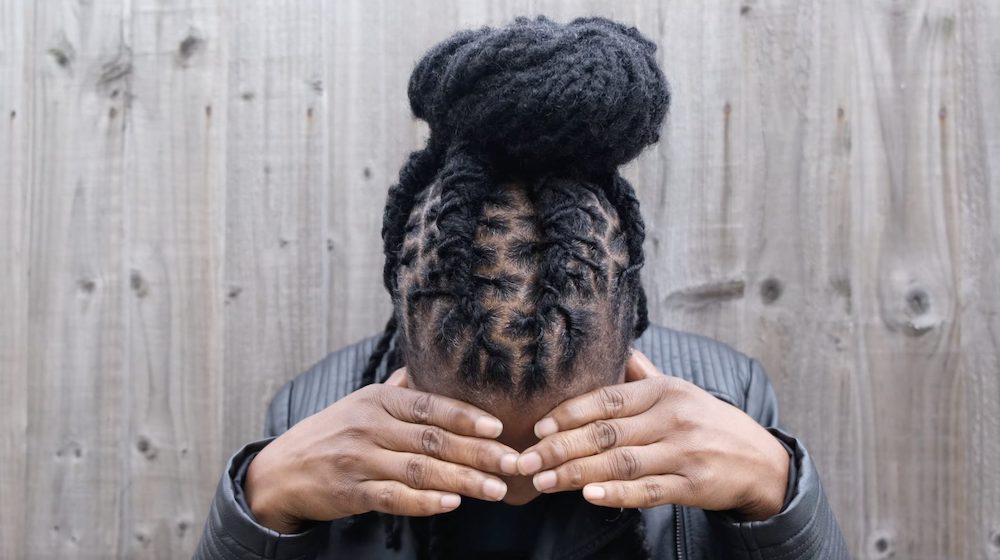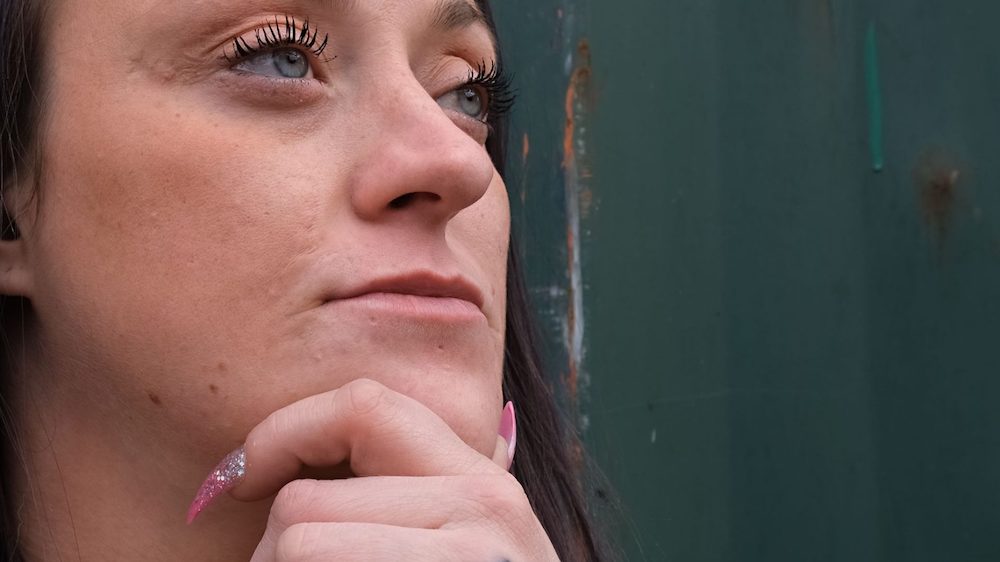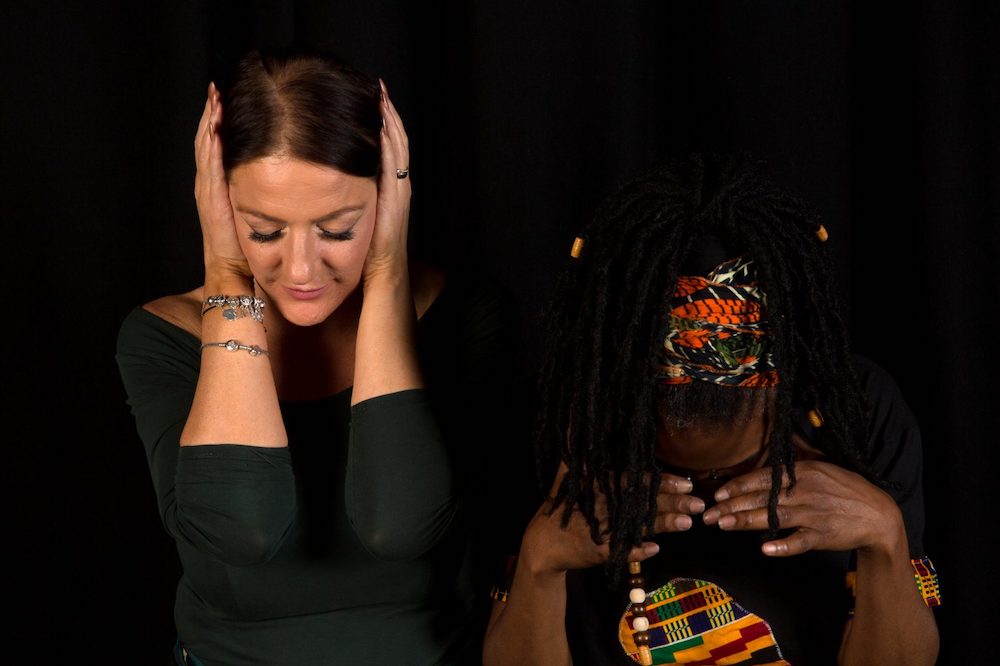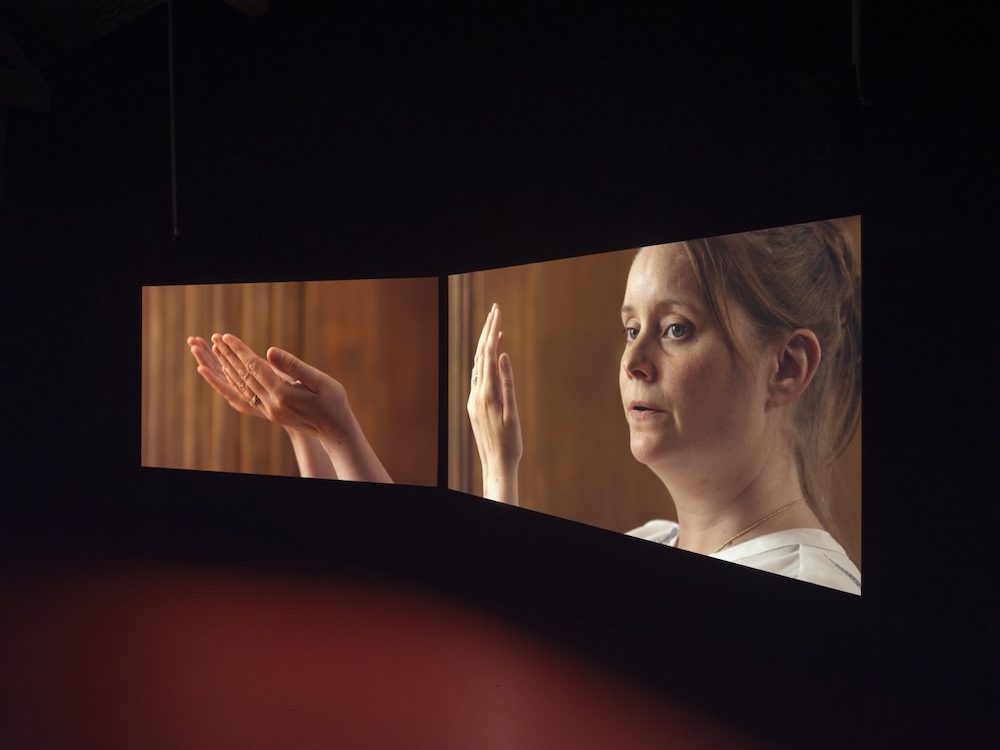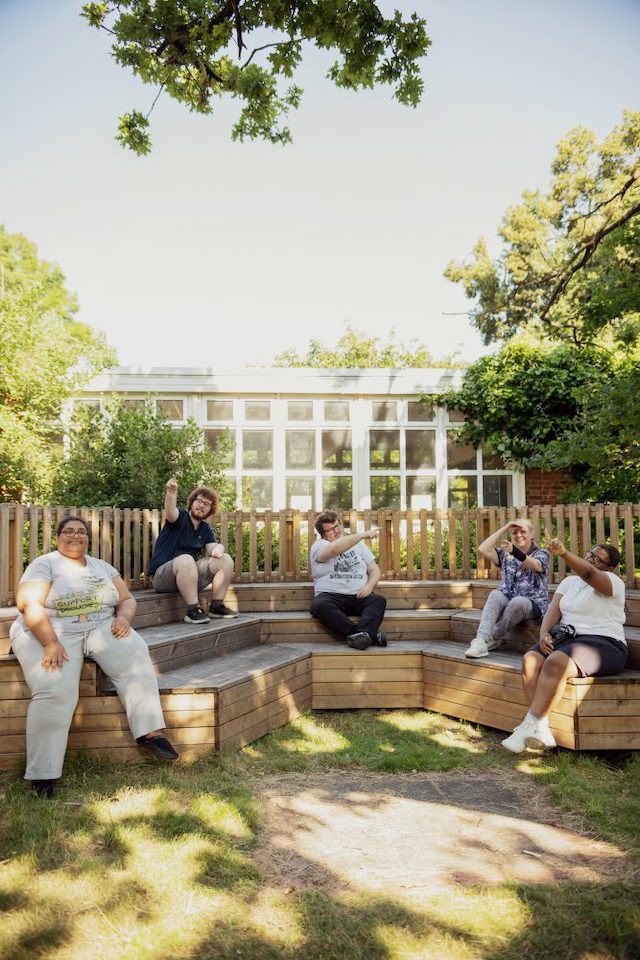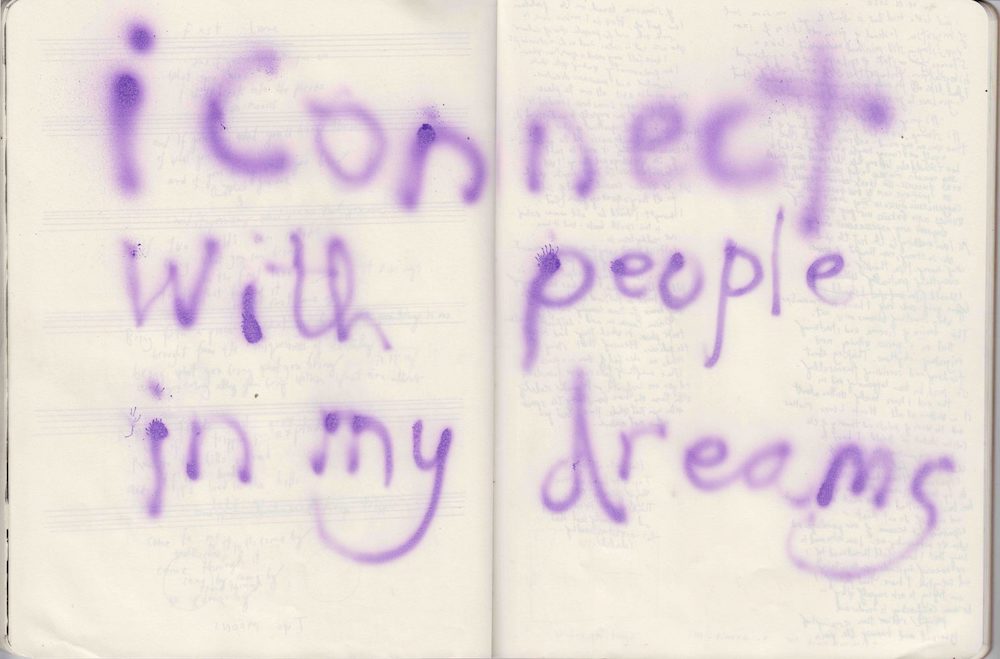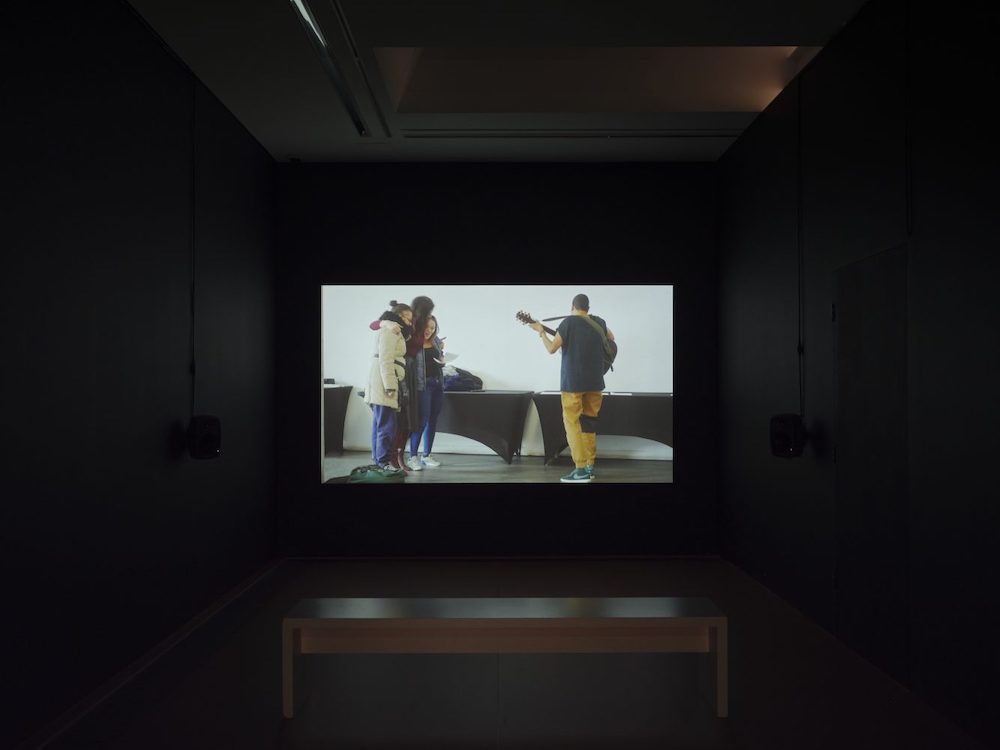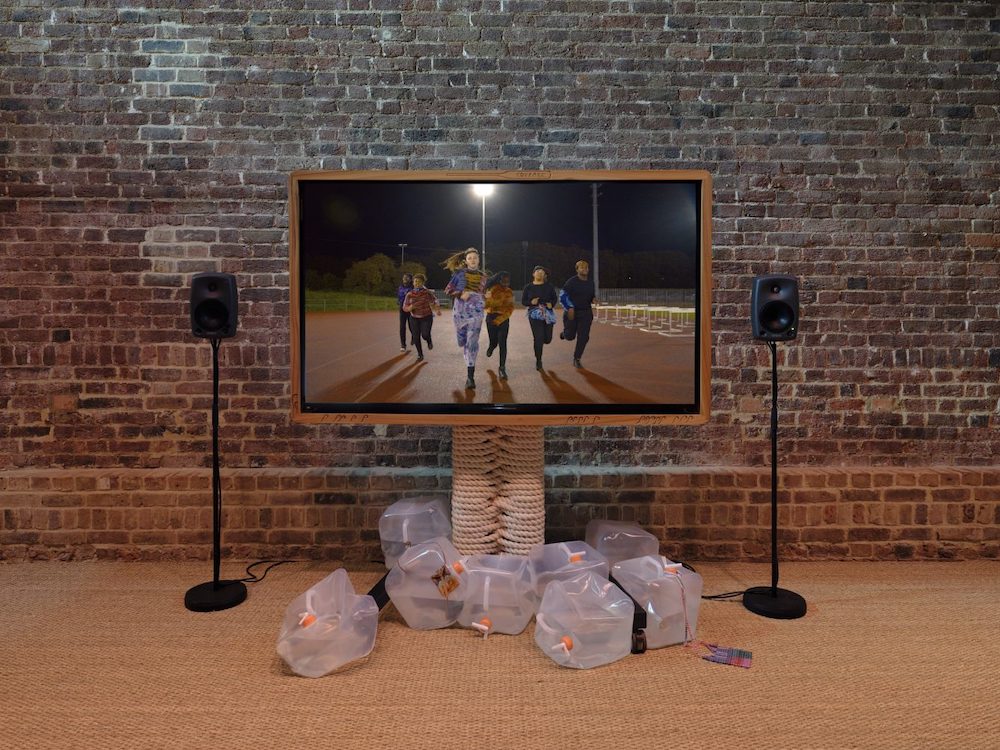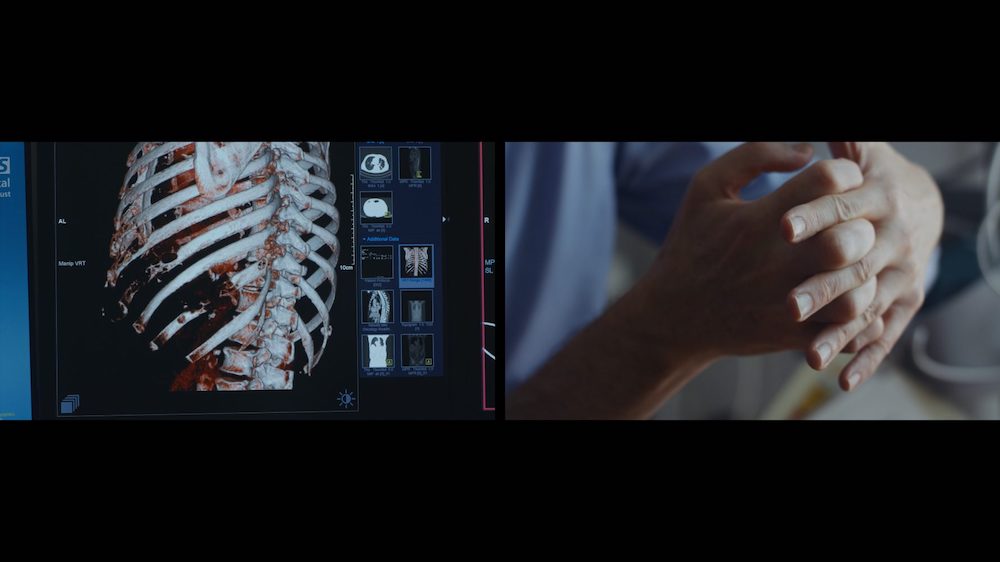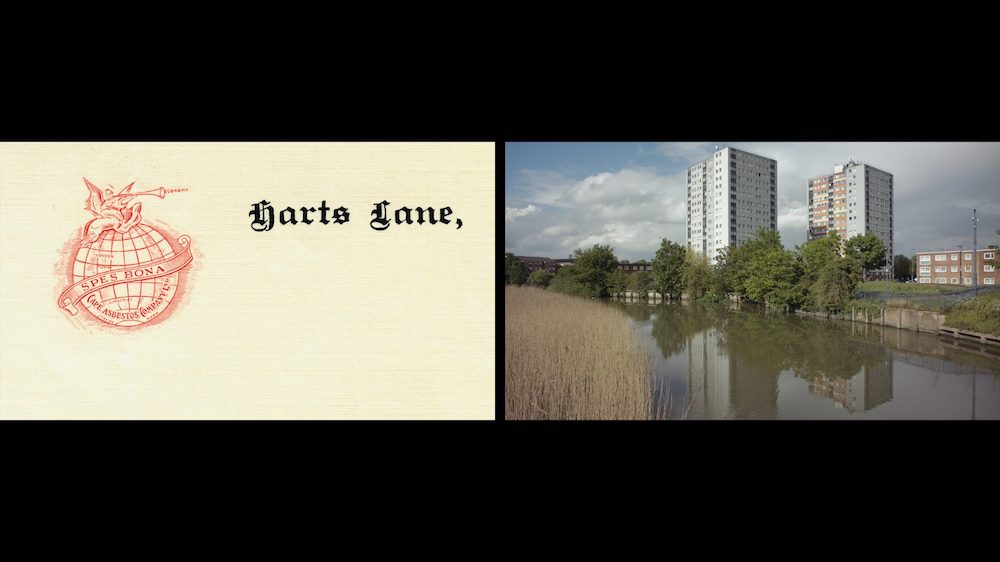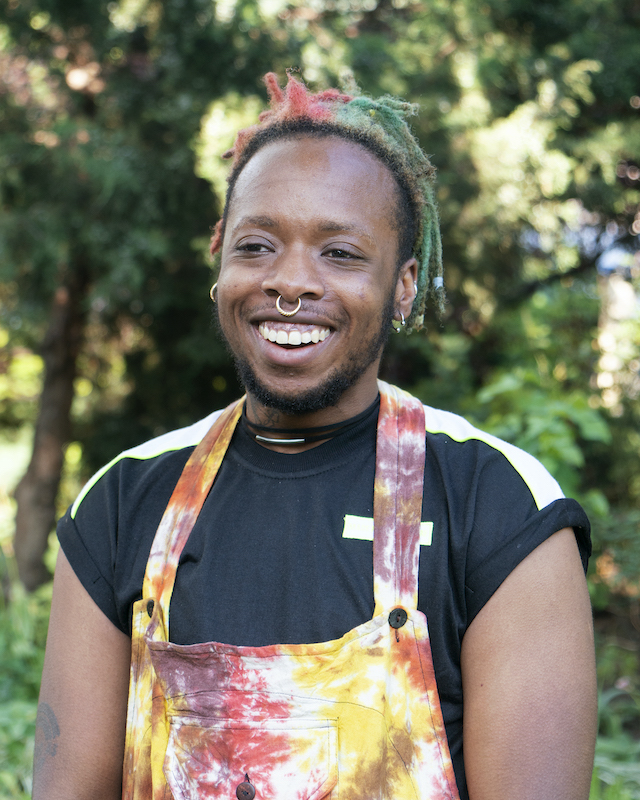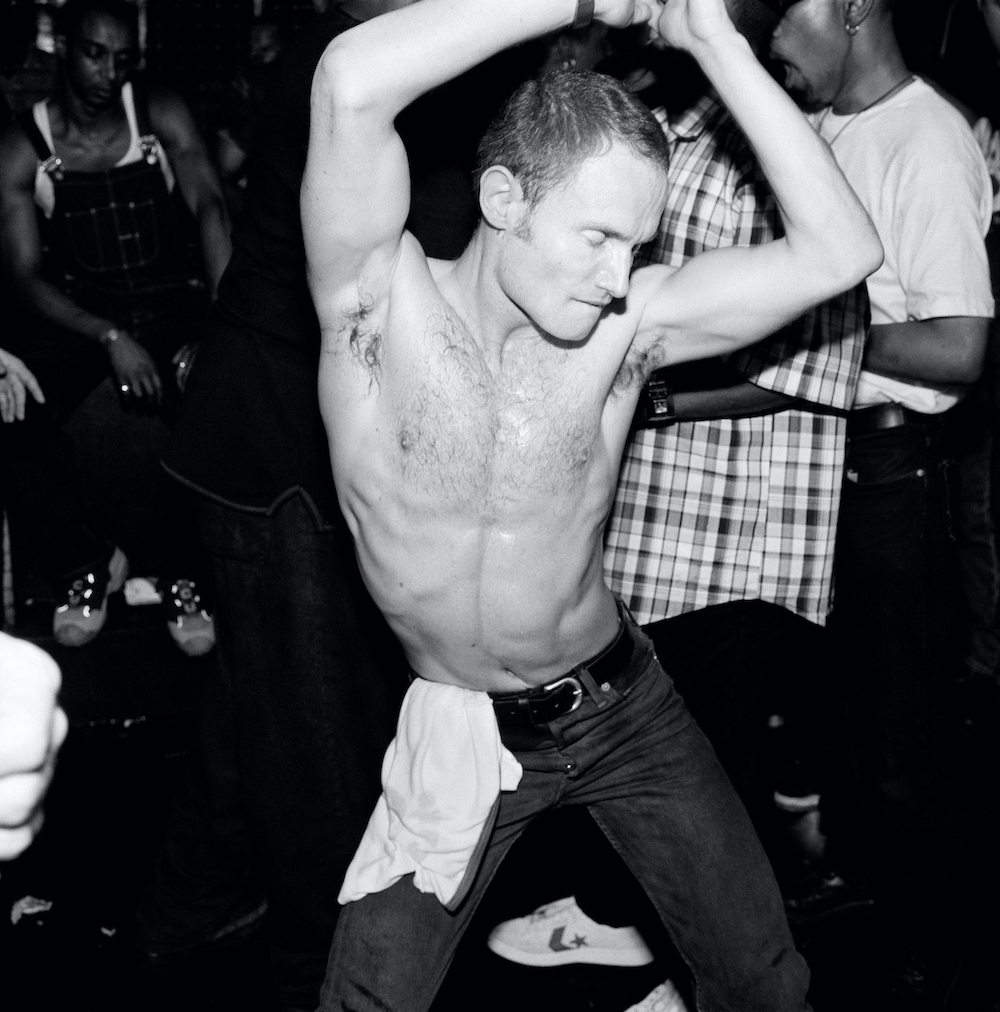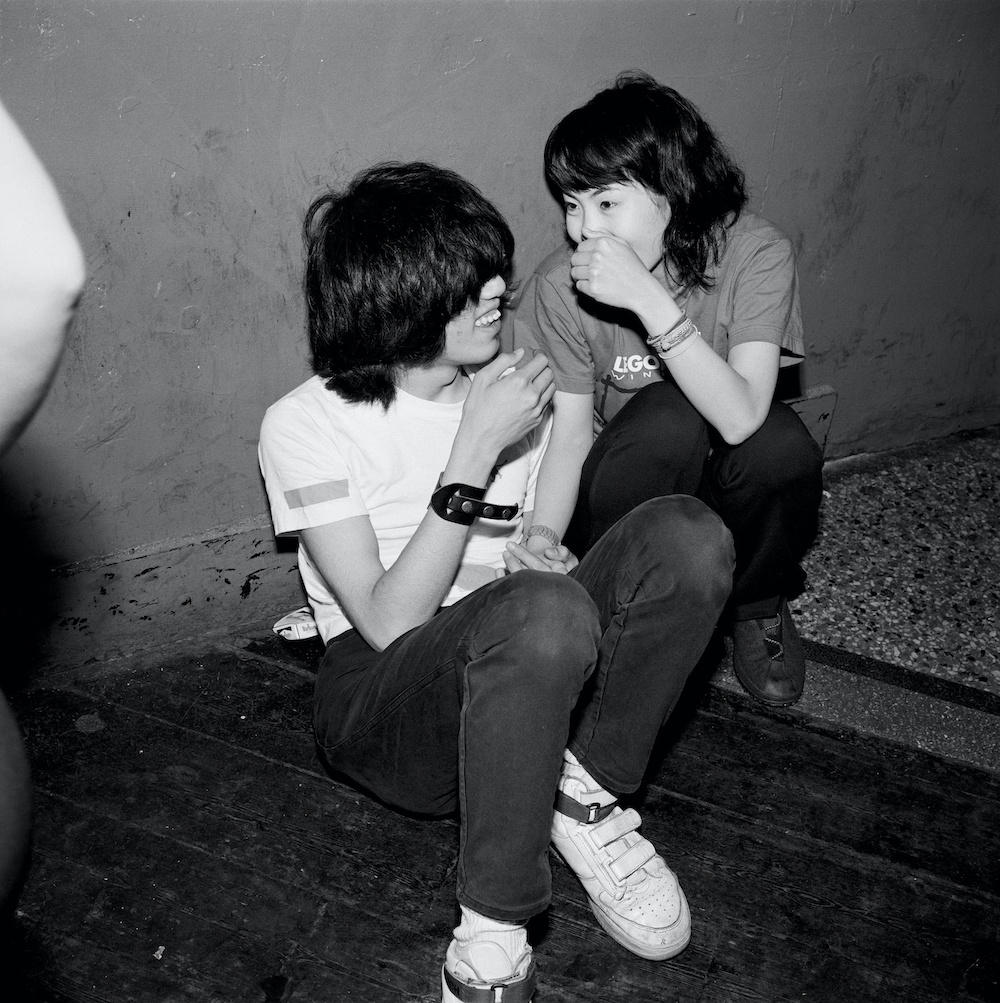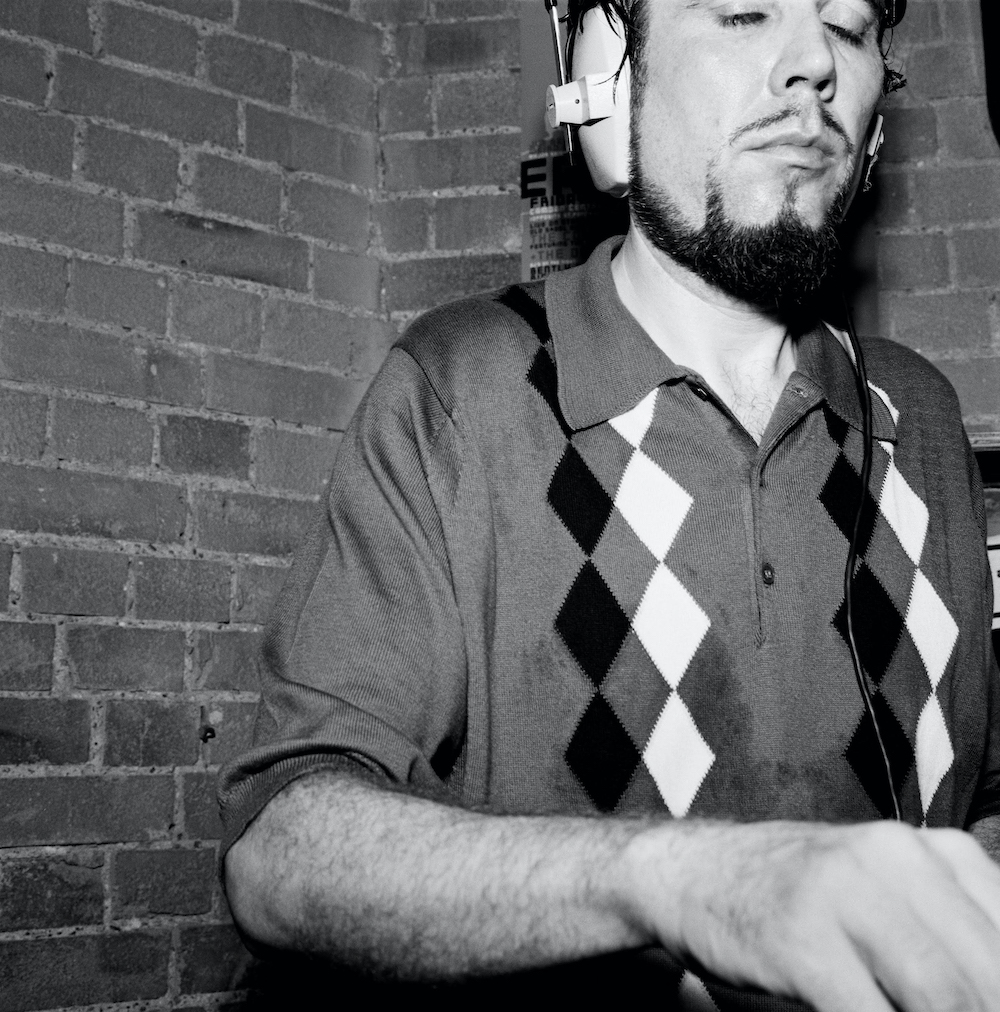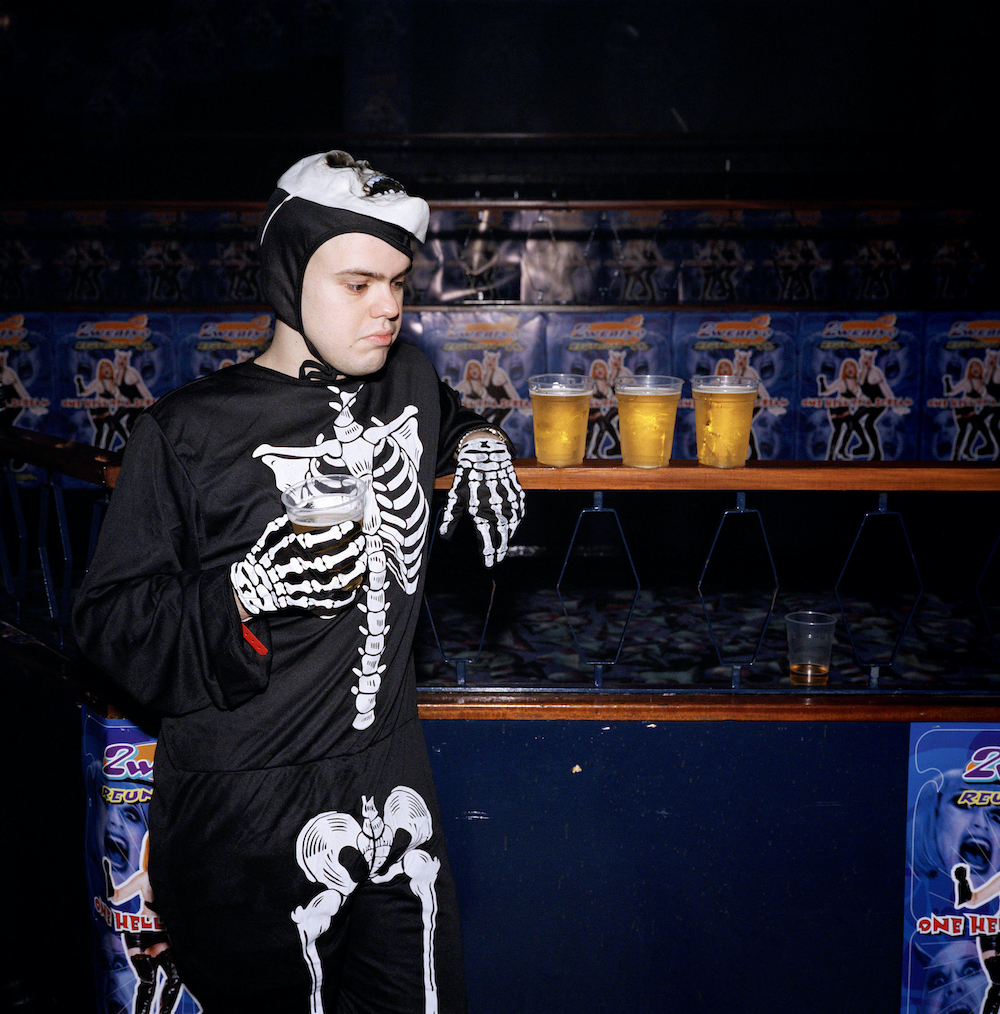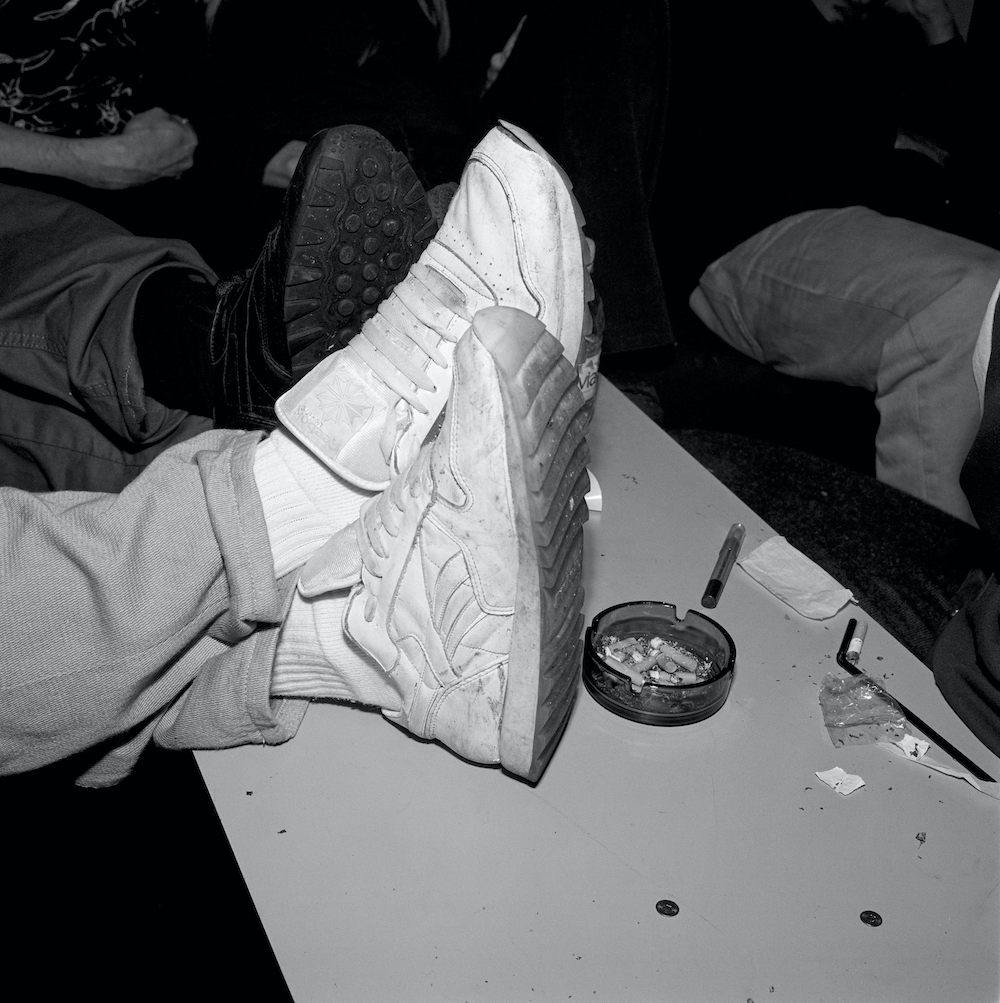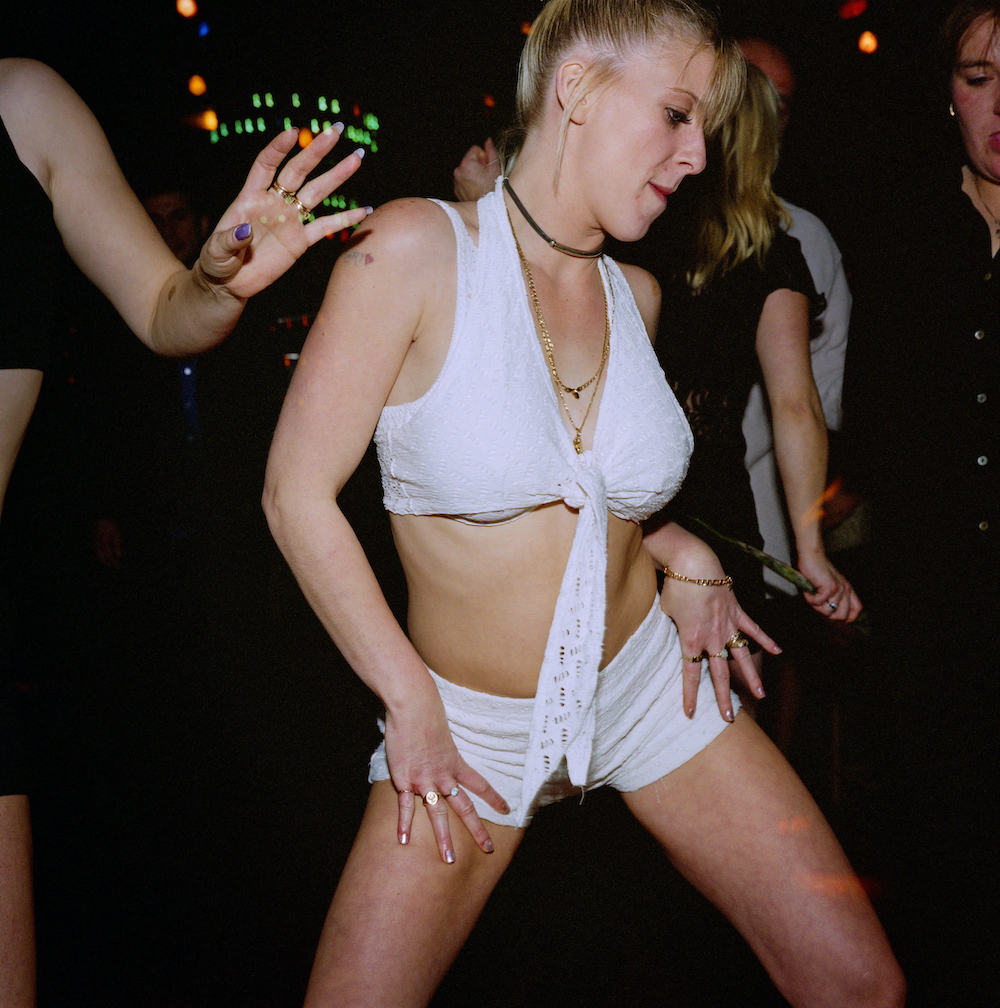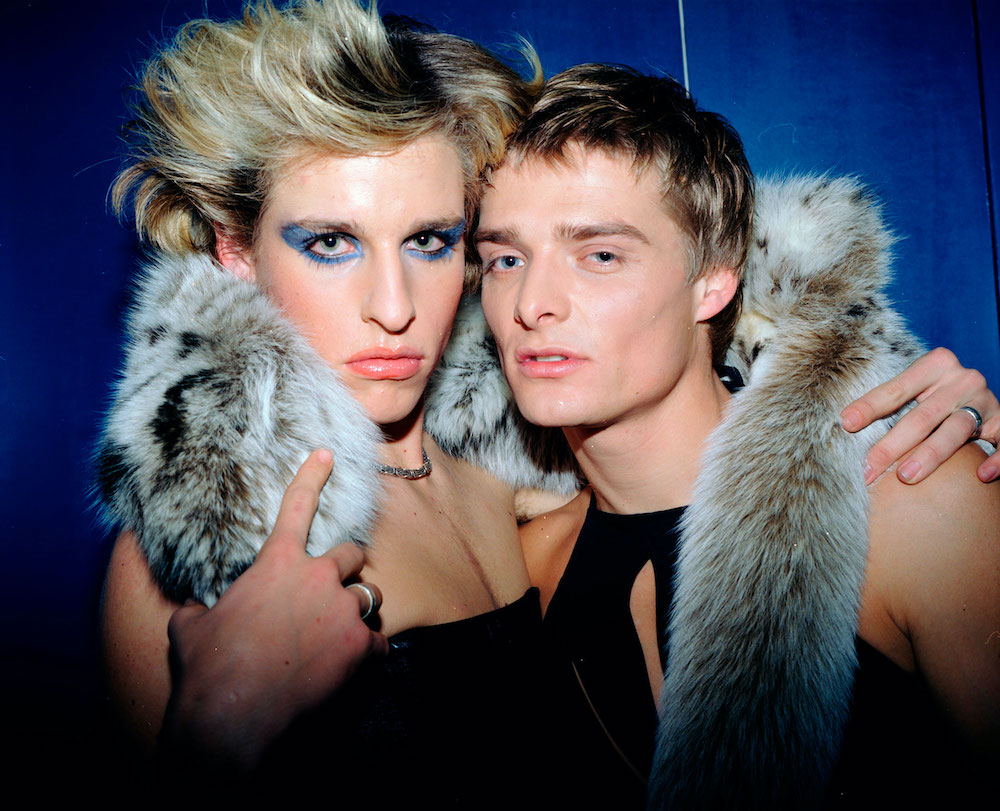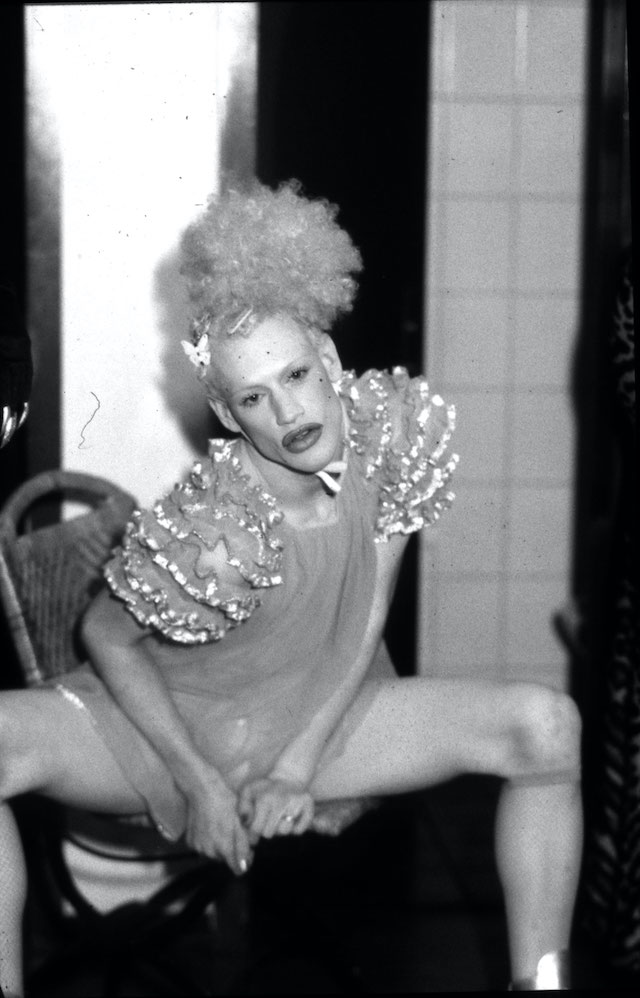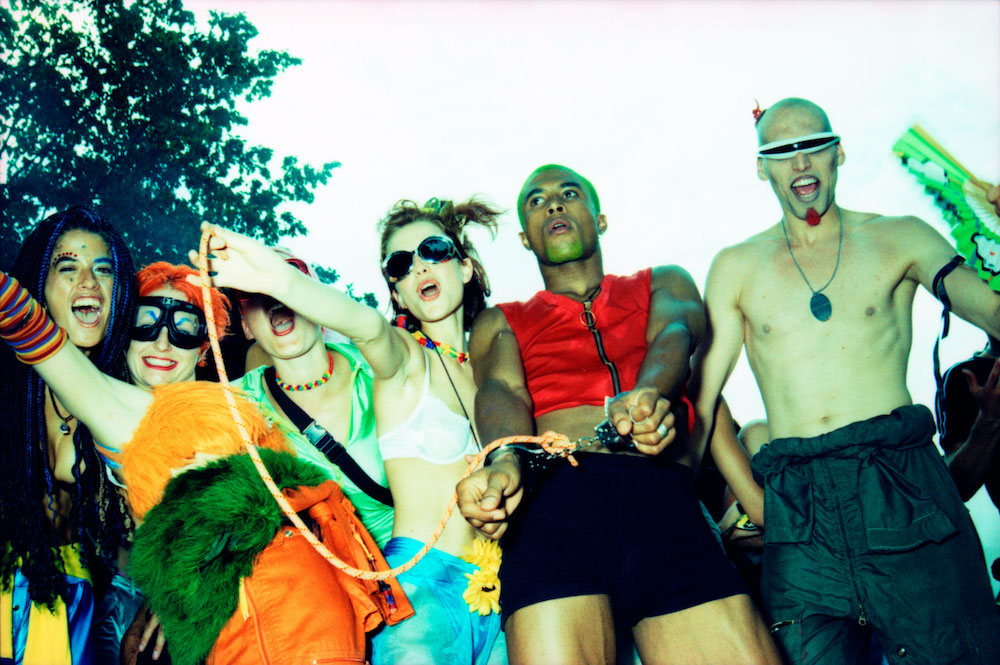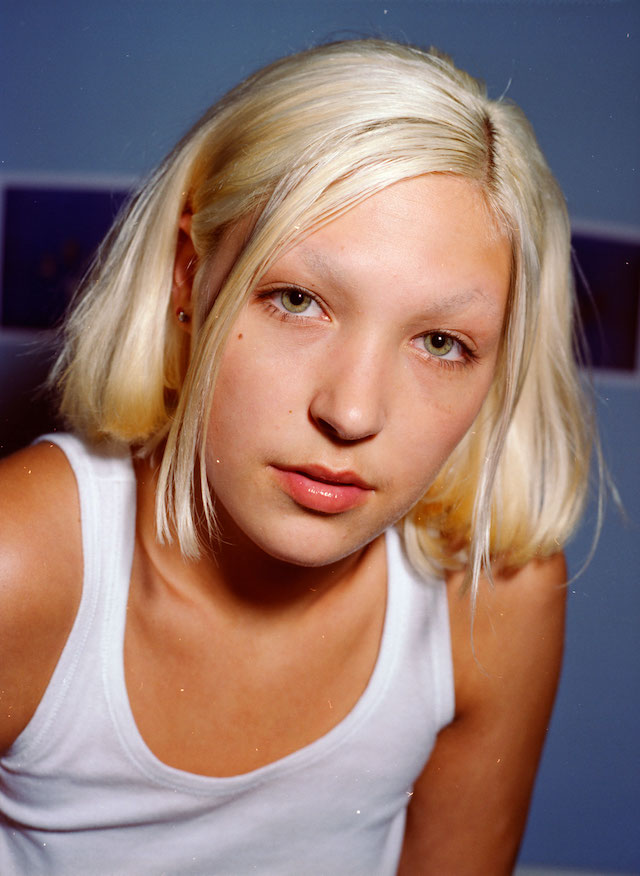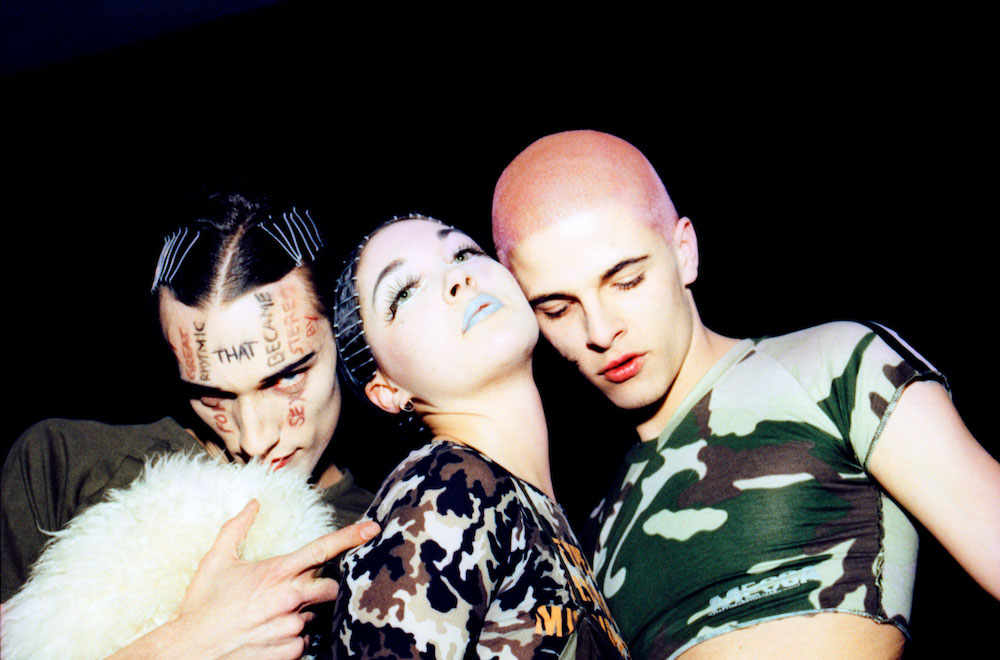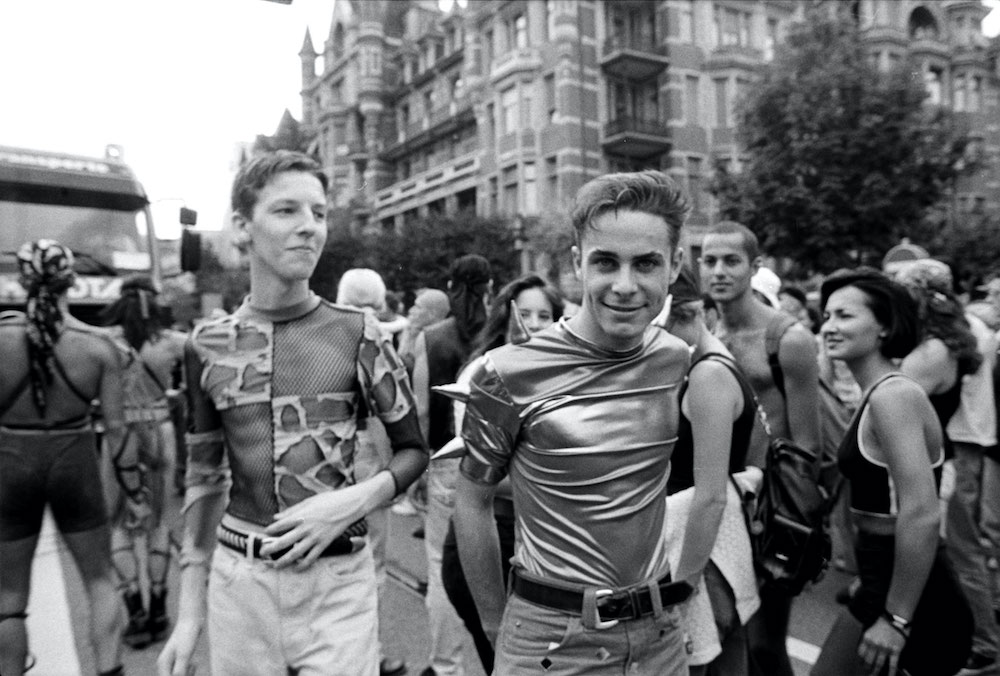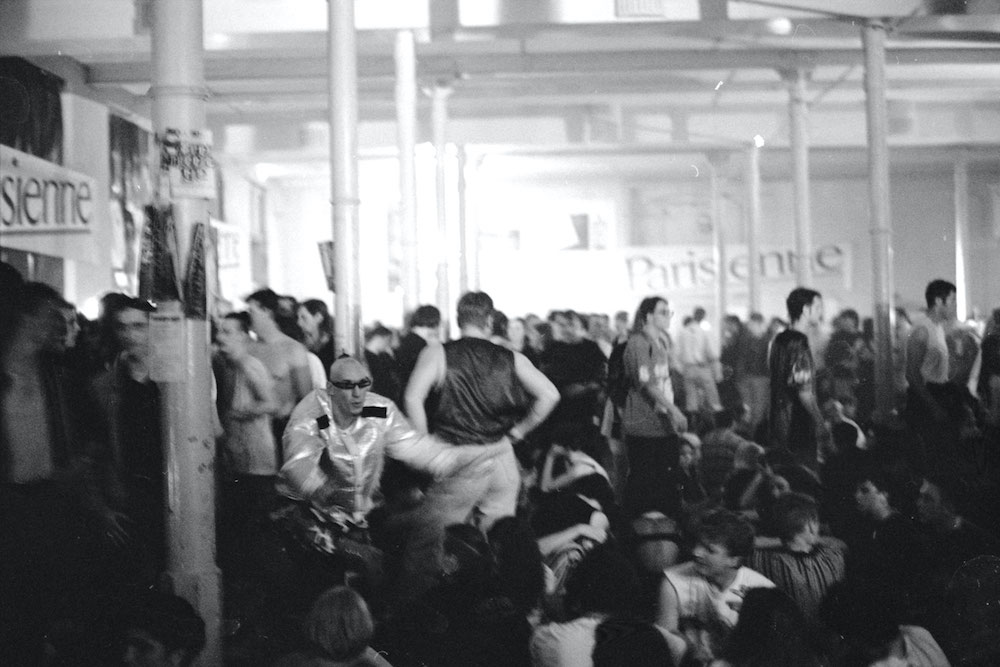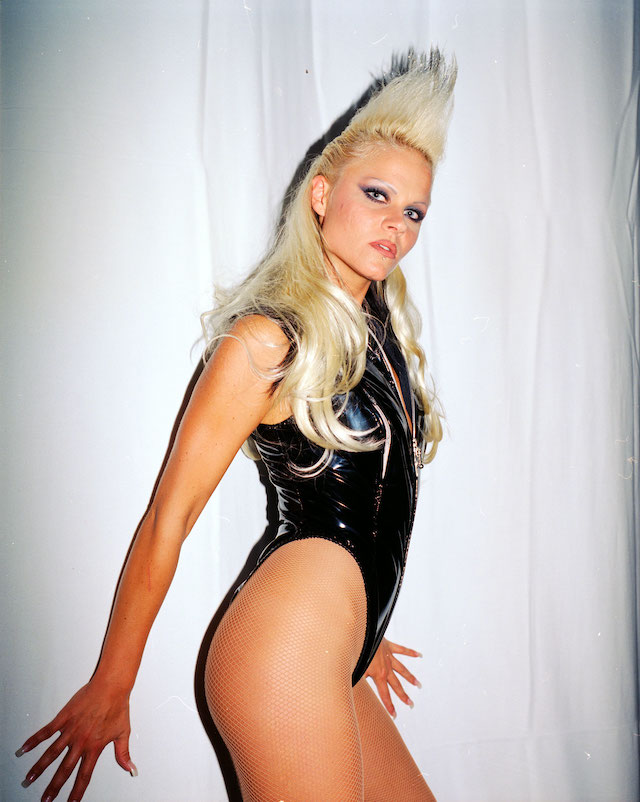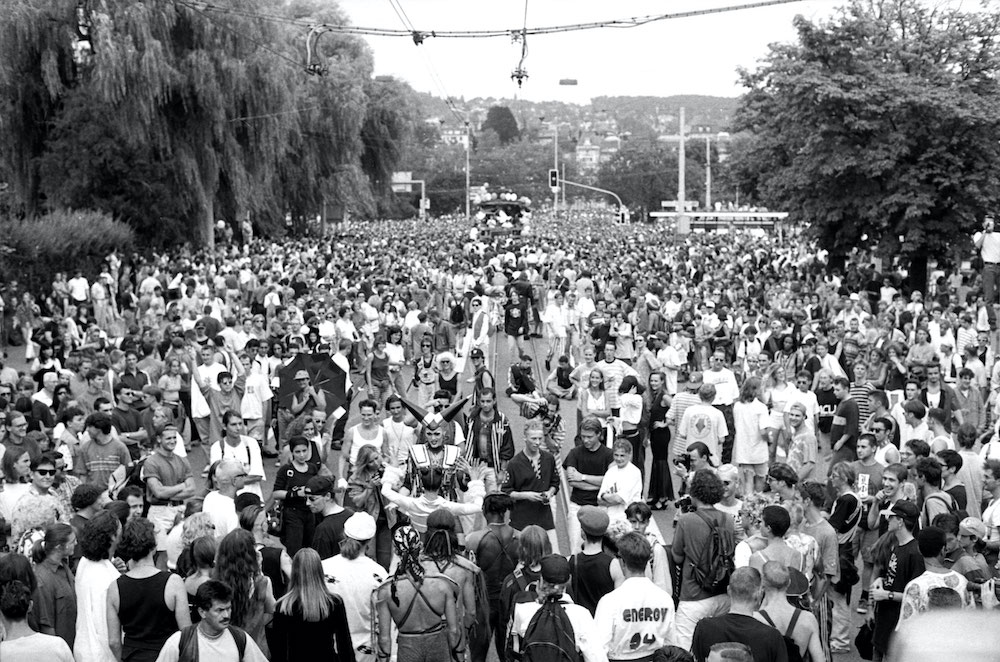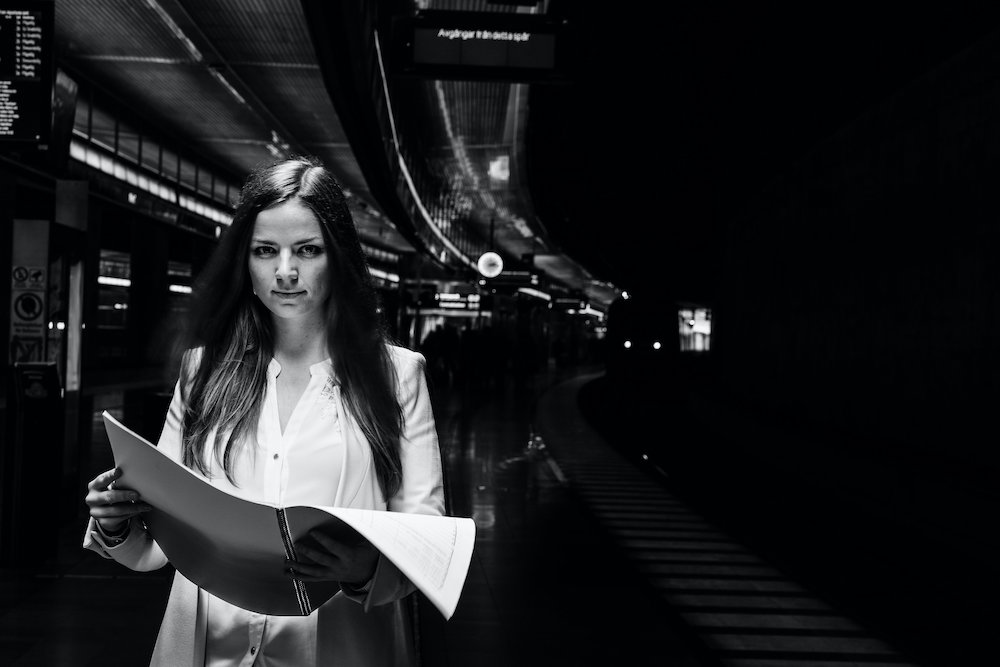Catching up with Jake Ewald of Slaughter Beach, Dog, around a new album and the reading and writing that went into it

Slaughter Beach, Dog has been through a few forms. It started as a solo outlet from Jake Ewald’s work in beloved emo band Modern Baseball, but following that band’s hiatus, became a larger band, initially with Modern Baseball bandmate Ian Farmer on bass, and now including drummer Zach Robbins, guitarist Adam Meisterhans and keyboard player Logan Roth.
It’s a roomy project that changes from album to album: Welcome was warm; Birdie goes between sparse and springy; Safe and Also No Fear is darker and more brooding; At the Moonbase adopts an identity and saxophone layer all its own. The most recent album, Crying, Laughing, Waving, Smiling, is much more candid, and much folkier.
The name itself is an edit of sorts – Ewald wanted to name the band after Slaughter Beach in Delaware, but a European band were already using the name, so he added ‘, Dog’. There’s always been a literary side to the band; Ewald talked about Welcome, the first album, as a fictional world, and has discussed his writing and reading in a few places, notably in a newsletter he’s been writing monthly since the start of last year.
We spoke over the phone shortly before the release of Crying, Laughing, Waving, Smiling.
At The Moonbase, Slaughter Beach, Dog’s last album, was mostly you working on your own – you’ve said before that you were working on another album with the rest of the band. Is Crying, Laughing, Waving, Smiling related to that album, or is it an entirely new thing?
That’s right. We were planning to go into the studio, we had just finished the tour, and then it was like smack dab the beginning of COVID when we really had, you know, no vaccines, no idea what was going on. We were too spooked to try to work together.
I was itching. I had been sitting on the songs for so long that I just wanted to get them out of the way, so I could write new songs. I just ended up recording it at home.
Then we pushed back whatever the next full band thing we would do. Yeah, that ended up being Crying, Laughing, Waving, Smiling. We ended up getting together to record those summer 2022. So two years behind.
It does feel like it’s picking up the same thread as the albums before Moonbase, but with a lot of the extra instrumentation you did on Moonbase that I feel like was quite new. Like Birdie, for example, is a lot more sparse.
Yeah, yeah, for sure. Part of that was on purpose with Birdie. It was just me and Ian in the studio and we really wanted to do something that was kind of wholly focused on the songs without much else.
Moonbase was a little bit the opposite – I really wanted to go crazy on it. The cool thing about CLWS is that we’ve never done these loaded arrangements that were recorded in a live setting – where it’s actually five people in the room playing as opposed to, you know, me holing up in the studio and just layering a bunch of stuff up on top.
The general rundown was that we got together, the five of us, and recorded, drums, bass, guitar, keyboard for, something like 20 songs, and then we started whittling them down as time went by, figuring out which ones we liked the most. I redid the vocals on my own, and we replaced some of the keyboards with real pianos down the line – Zach added a bunch of extraneous stints at the end.
But yeah, the bones of the songs were the five of us in the room playing them for the first time, figuring them out in real time.
All those takes are on the record. All the drums are just, you know, the drums that happened when we first sat down to play the song, same with the bass, same with a lot of the guitars.
How do you feel about that new way of working?
It wasn’t totally new, but it was absolutely my first time doing it in a setting where all the musicians were so comfortable with each other. In different iterations, we’d all been playing together for a little bit.
Maybe even more important than that was that I’ve never made a record like that at this age, which is obvious, but, you know, everybody in that room – at the point that we made the record – had played in so many bands, played on so many records, been through so many iterations of doing this. There was this calm, straightforward, open, listening perspective that we were all able to get on, in a way that I had never really experienced before.
I feel like so many of the records I made when I was younger were trying to prove something, or trying to put something for myself forward. Here everybody was on the same page, and everybody just wanted to lift up the songs as best we could.
I’ve always written the bones of the songs by myself and then brought them to some version of the band. With Birdie, I just went in the room with Ian, then with Safe and Also No Fear, it was me and Ian and Zack and the guitar player at the time, Nick. Then Moonbase, like I said, I went back and did by myself.
Me and Ian and Zack, we’ve just done so much together. We even went on a tour, maybe more than one tour, where it was just us playing as a trio.
So with this record, it’s a really interesting mix of this super tuned-in, long-time connection the three of us have, and new variables thrown in, with Adam and with Logan, to get some more surprises happening.
Is there anything that you feel like is really tied to the record books wise for you, or writer wise?
I was thinking about this a couple weeks ago, trying to figure out if there was a certain type of thing I was reading that ended up on the record. I feel like I ended up with more story songs than usual on this one.
I was digging through my library, and one of the first things that popped out to me was remembering that I read Faulkner’s As I Lay Dying in which every chapter is written from a different character’s perspective. It’s obviously been done so many times since then, probably before then, but the way that he did it really affected me, and pushed me to try to inhabit my own characters with as much care and grace as he does.
Oh, and 2666 by Roberto Bolaño . That one’s less of a straightforward chapter-by-character kind of thing, but it’s broken up into these big sections where it’s these different stories revolving around the same thing.
Then the other day I remembered – did you ever read The Copenhagen Trilogy? [by Tove Ditlesen, translated by Tiina Nunnally and Michael Favala Goldman] Man, it was so good. Probably the only time where I’ve gotten hit over the head with such good press about a book and it actually came through.
It blew my mind how short it was, because she just distills everything impeccably. She just reduces it down – just reduces her whole life down to this super simple, concrete narrative that still manages to have really visceral, intimate moments.
But it’s refined so far, you’re moving through the narrative so quickly. It starts from when she’s a child, like her earliest memories as a child, and then it goes through growing up, becoming a teenager, getting married, having her own kids, dealing with addiction issues.
It’s broken up into three sections technically, but all three sections together are I think less than 200 pages. So it’s really short.
It’s the same philosophy that I appreciate – have come to appreciate – in song, where you really have to refine what you’re trying to say because you only have two and a half minutes.
You have to take something really meaningful, and a lot of times larger than life, but sift through it, find the parts that mean the most, and create a storyline when you stack them all on top of each other.
It read like a song, it was one of those.
You’ve said you like Lydia Davis before – that sort of ruthless honing things down sounds a bit like her.
Yeah, for sure. That goes back to a bunch of years ago.
I got her Collected Stories. They’re mostly – this is almost all of her work – nothing more than three pages, most of them are on one page. I think whenever I first got that collection, which was probably six or seven years ago, I was just so enamoured with the idea that you could write stuff that short and be published. I always found the prose-writing scene so intimidating and to see a whole collection of stories that short I was like – oh, you can do anything if it’s good.
She’s one of those language people where just reading the words, separate from whatever’s going on narratively, can be so stimulating and interesting. I’ve read a few interviews with her, and I’ve ended up buying grammar books that she has recommended, like this one by Virginia Tufte.
I haven’t picked it up in in a couple of years. I stumble across things like these, that I would have read in college or should have read in college, or did read in college but didn’t pay attention to, and then I pick it up as an adult, and just go oh my god, this is so interesting.
I am now a person who writes sentences a lot of the time, as a job, and this is an instructional manual on how to write really interesting sentences. What is cooler than that?
Has that come back into your songwriting a lot, then, revising sentences?
Yes, which I didn’t do for a long time.
There was a while where I came at it from a much more musical perspective – I would sit down with the guitar and a pad and paper and try to do everything at the same time. People do that all the time and it just happens, but I find it’s so difficult trying to do three things at once.
I think I was writing this song for Moonbase, I committed to this practice of just sitting down at the computer and writing lines or stanzas and then revising them after writing them. I was talking to Adam, our guitar player, recently. I hadn’t really thought about why that worked so well for me, but I think it’s because if you’re writing sentences that work, and stanzas that work, you are setting a rhythm inherently. Melody is huge, obviously, but for the kind of music that I listen to and the kind of music that I like to write, rhythm is so crucial to your phrasing and the way you deliver a line, and whether it sounds casual or familiar. It can have such a huge effect on whether the thing you’re saying sounds believable.
The thing that I’m always striving for is a conversational tone – I feel like so much of that is just sounding unbothered, or unhurried, or not like you’re trying to shove a bunch of words into a sentence that’s too short.
That is kind of pre-melody – you can just look at the words on the page and say them out loud and read them back and be like, oh, this is going to work, this isn’t going to work, I need to shorten this and tighten this up, I need to make this word hit at this place in the line because that’s where the emphasis is, you know.
So is Crying, Laughing, Waving, Smiling the same process?
Yeah, definitely. I think I’m pretty sure all of those songs, except maybe one, were written that way. I’m just sitting down at the computer, writing the lyrics, refining the lyrics, and then starting to fit them into chords and melodies.
I feel like I’m able to express things that I’m more interested in. When I think back to songs that I wrote when I was trying to do everything at once – with the singing and the guitar playing and the lyric writing – there’s this, like, black cloud hanging over the situation, of just trying to make it all work, trying to make it all interesting, having it go together and make sense.
But whenever I’m just writing the lyrics, I actually have the space to explore an emotion or a feeling that I’m interested in exploring. Being able to investigate it further than I used to be able to. It’s less like just trying to make a song. It’s more like the idea and the feeling come first, and then they’re kind of modified to fit inside a song.
There’s a song called “Engine” – that was one of the ones where it was just a stream of consciousness thing, lyrically. The music ended up being so dark and brooding, it made me keep exploring the idea over and over again. Since I wrote it, I have been convinced that it means like five different things.
But yeah, it feels more more conducive to that happening, which is my favourite thing to experience when I’m listening to somebody else’s song, something that rewards repeated listens and changes over time the same way that a person would.
Do you still think of Slaughter Beach, Dog as a fictional world that you’re working on?
When I first started doing it, I could only see writing as these two poles: on the one hand, there’s this stuff that’s hyper personal and literal; and then on the other hand, there’s this stuff that’s completely fictionalised and impersonal and detached from whatever’s going on in my life.
I feel like I’m occupying this space now that’s really satisfying – sometimes something comes from something that happened to me, sometimes it comes from something that I just made up, but as I get going, it becomes this constant volleying back and forth of those things informing one another, whenever one is needed.
If I’m trying to write about an emotion that I felt that was really powerful, that doesn’t always happen in a super, like, pleasing, concise, romantic way. Sometimes it happens in a stupid dumb way. I have to translate something that I felt that I want to convey, and stick it inside a vessel.
I write more than I ever did before. It’s led me to so much more inspiration, and I like the songs that I’m writing.
Was it a revelation or is it just where you’ve arrived?
I don’t think I realised what was happening. I first started doing it a lot, I think, on Safe and Also to Fear. Around that time, I started getting obsessed with reading interviews with novelists and story writers and poets, because I was like, I want to figure out how to do this so I don’t have to go on tour anymore. I would love to do that one day.
But I think reading about the process for those kinds of writers, I think I picked it up. I feel like novelists and poets and story writers talk about that way more often – process – than songwriters do.
I’ve tried to make myself a student of songwriting, reading the same kinds of interviews, but I feel like when people talk about process, I don’t know… I feel like if it is really personal, people talk about how personal it is, and if it’s not personal people don’t really talk about it, and they try to keep it a secret. There’s not so much talk about the middle ground.
I wonder if it’s the realities of songwriting and being in a band; you’re kind of doing ten different jobs all the time, writing and playing and recording and touring and making fucking t-shirts, and everything else you have to do. But in an interview with a novelist, 80% of what you’re talking about is just how the fuck are they sitting down and writing this book?
I subscribed to the Paris Review, and got obsessed with those longform interviews. Authors that I didn’t know and I’d never heard of. I just found it so illuminating for those processes.
Anything that you really, really liked?
I loved the George Saunders one.
Not exactly for the process. He’s really open about how he spent so many years basically just trying to be Faulkner and totally failing. At some point in his late 30s or early 40s, I think, he was so miserable, he found himself just writing these little stories on the bus when he would come home from teaching that were written – like the way that he writes voices sometimes, everyone is speaking English and they sound like adults, but they also sound kind of nuts, like they just got dropped in from space.
It’s so cool to hear that in the context of him coming from trying to be Faulkner, which is just so, you know, regal. He just started writing in these weird, broken, hilarious voices, and that was what clicked.
I’m reading the book for the way that it sounds and the way that it makes me feel and the trip that it puts me on, psychologically and emotionally. I heard this interview with Patti Smith a couple years ago, I think she was on Mark Maron.
And she was talking to Maron and he was like getting all up in her ear about Burroughs and saying, Do you actually understand everything that Burroughs writes about?
Like:
he’s so insane, he’s on a different planet.
Do you actually like dig in and like feel like you get that stuff on a gut level?
And she was like:
it’s not about getting it.
It’s like listening to a fucking saxophone solo, you know, it just happens to you like it washes over you and that is the experience. That’s the point of the thing.
I think before I heard her say that I had felt that for a long time, but was always kind of self-conscious about it and I didn’t know how to describe it.
Hearing her say that really gave me permission to just read way more – I was like, yeah, this is what I want from it. It’s like going on a roller coaster.
I used to get so self-conscious – I’ve read interviews of people who can just like, quote passages. Like, what do you do in hanging around long enough to quote this passage? Why aren’t you just burning through these pages?
I know you do a newsletter, how has that changed things?
It’s definitely changed the way that I write songs in the sense that since I’ve been in school, the newsletter is the first time I’ve had to write anything on a deadline. It’s created this environment where sometimes I’m prepared, but it’s not often.
It’s a week until the end of the month, and I’m like, I have to write something. It’s schooled me in being able to just suck it up, sit down, and do it. That sounds more disciplinary than I mean it to – just in the sense of being able to start, not being afraid, and trusting. It doesn’t have to be this terrifying thing.
I also did a songwriting workshop with my friend Dave from the band Trace Mountains, where we had to turn in a song every week.
With both of those, I had to get over the fear of making stuff that’s bad, and learn that, you know, making stuff that’s bad puts you on the track to make something that’s good. A lot of times the thing that’s good is just something that started out bad, but you worked on it more.
I would love to write, spend more time writing stuff that’s not songs, but I never know what that would be. But it would be possible, I know how to just sit down and write now. Which feels good.
So you’re not dying to do it?
Well, I don’t know.
I feel like I try to hide how much I’m dying to do it. Just, realistically, I don’t even have time to write songs, most of the time.
So to think about taking the time to write something that’s way more involved than writing 10 songs, it just seems so impossible.
Is there anything else that comes to mind when you think about writing?
Reading those Paris Review interviews, and reading more interviews with musicians, I feel has given me so much license give myself to these things; to give myself to books, to give myself to music and to trust and know at this point that it’s going to show up in my work and it’s also gonna make my interior life more fulfilling.
I wish I had given myself that license when I was younger. Even after I started playing in bands… I don’t know, I wasn’t that invested in listening to records or reading books or anything.
But I find, every time that the people whose work I find the most excitement in are people who are just obsessive consumers of art. I just find myself thinking like, that’s what I want to do. That’s all I want to do. It’s cool if there’s a public document of it, some element of it where it’s kind of passing through me and turning into something else.
So the songs are like a bonus.
Yeah totally. It does feel like my current mode of investigation – in the stuff that I’m reading it’s just people investigating a feeling or investigating an idea, song is my… I don’t know.. my magnifying glass, yeah.
What are you reading now?
I’ve never read Rilke’s Letters to a Young Poet, I’m reading that, It’s really fucking good. One of my buddies is trying to get me into Stephen King, so I’m reading Needful Things. I’m rereading All About Love by bell hooks because I feel like I’m being really selfish recently.I read this fucking beautiful – not exactly a cookbook, it’s right here: An Everlasting Meal by Tamar Adler.
She’s a renowned chef. It’s instructional a lot of the time, but it’s really more so about how cooking fits into her actual life, and her personal philosophies behind it. The thing that I come back to is I’ve always had so much trouble making omelets for myself, and the way that she describes how to make an omelet – not just how to but the omelet in the context of her morning from an emotional perspective – it finally made sense to me. Which sounds really over-romantic and dramatic probably.
Oh and then Kick the Latch by Kathryn Scanlan.
Aug 9–Fog, that was another huge influence on the record. Like, this is what writing can be.
That book is almost non-narrative, but at the same time, you’re just fully inhabiting one person’s perspective. Kind of just like The Copenhagen Trilogy, it’s so refined and so carefully assembled that it just takes the guts of that individual experience. It’s like dressing it up in a ball gown, or something.
It’s so spare. That’s another one that’s like a song, you know? Each page is just like a little song.
Crying, Laughing, Waving, Smiling is out now.
